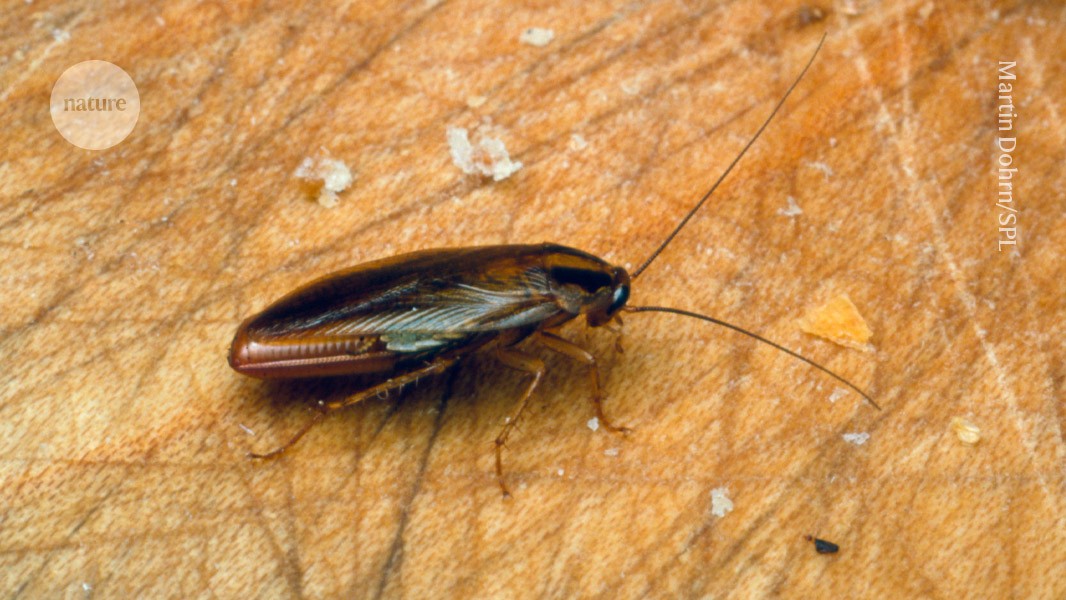The origin of the cockroach: how a notorious pest conquered the world But it wasn't originally found in Europe

Genomic analysis suggests the common kitchen vermin spread from Europe to the world

The German cockroach (Blattella germanica) is found all over the globe — but its origins have been mysterious.Credit: Martin Dohrn/Science Photo Library
A ubiquitous household pest has unexpected origins. A cockroach that lives in human dwellings all over the world is known as the German cockroach — but it did not come from Germany originally. A study published today1 in the Proceedings of the National Academy of Sciences suggests that the creature originated in South Asia and spread globally because of its affinity for human habitats.
Swedish biologist Carl Linnaeus was the first scientist to describe the cockroach — which he named Blattella germanica — in 1776 in Europe, hence the assumption about its German origins. “They did not originate from there, but they were domesticated there and then started to spread across the world,” says study co-author Qian Tang, an evolutionary biologist now at Harvard University in Boston, Massachusetts.
Tang and his colleagues analysed the genomes of 281 German cockroaches collected from 17 countries, including Australia, Ethiopia, Indonesia, Ukraine and the United States. They used the similarities and differences between the genomes to calculate when and where different populations might have been established.
They found that closest living relative of the German cockroach is probably the Asian cockroach Blattella asahinai, which is still found in South Asia. Blattella germanica probably split off from it around 2,100 years ago.

The Asian cockroach (Blattella asahinai) is the closest living relative of the German cockroach.Credit: Apurv Jadhav/ephotocorp via Alamy
Then, around 1,200 years ago, B. germanica hitchhiked west into the Middle East with the commercial and military traffic of the Islamic Umayyad and Abbasid caliphates. It began to spread east from South Asia around 390 years ago, with the rise of European colonialism and the emergence of international trading companies such as the Dutch and British East India Companies. Around a century later, the German cockroach hitched a ride into Europe, and from there spread around the world.
Cleo Bertelsmeier, a researcher of invasive species at the University of Lausanne in Switzerland, says it was exciting to see how the study was able to map the genetic data to historical events. The use of genomics was essential to understanding the dispersal of the German cockroach, because “this is already quite an ancient invasion, they became so abundant that there is no way, without such tools, to know that this is not a native species from Europe”, she says.
German cockroaches owe their success to their extraordinary adaptability, says Franz Essl, an ecologist at the University of Vienna. They readily adapt to highly modified environments, such as human-occupied niches; they have a short reproductive cycle; and they are very opportunistic, qualities that “also make them prone to be transported as hitchhikers to new places”, says Essl. “That’s a perfect combination of ingredients for making a species very successful in a human-shaped world.”
doi: https://doi.org/10.1038/d41586-024-01454-1
This story originally appeared on: Nature - Author:Bianca Nogrady


















